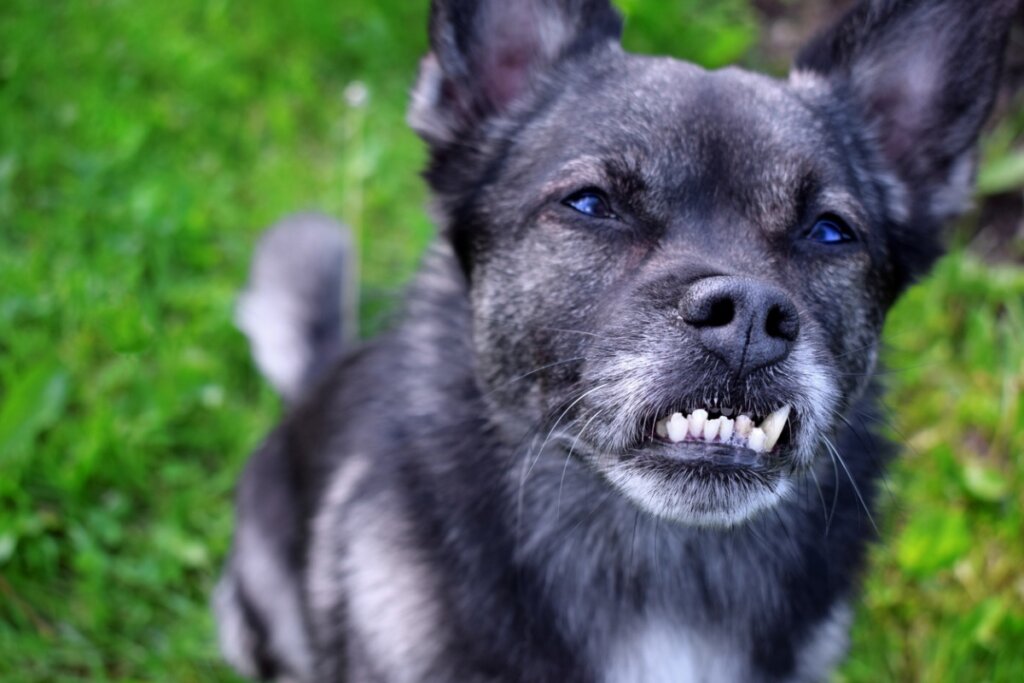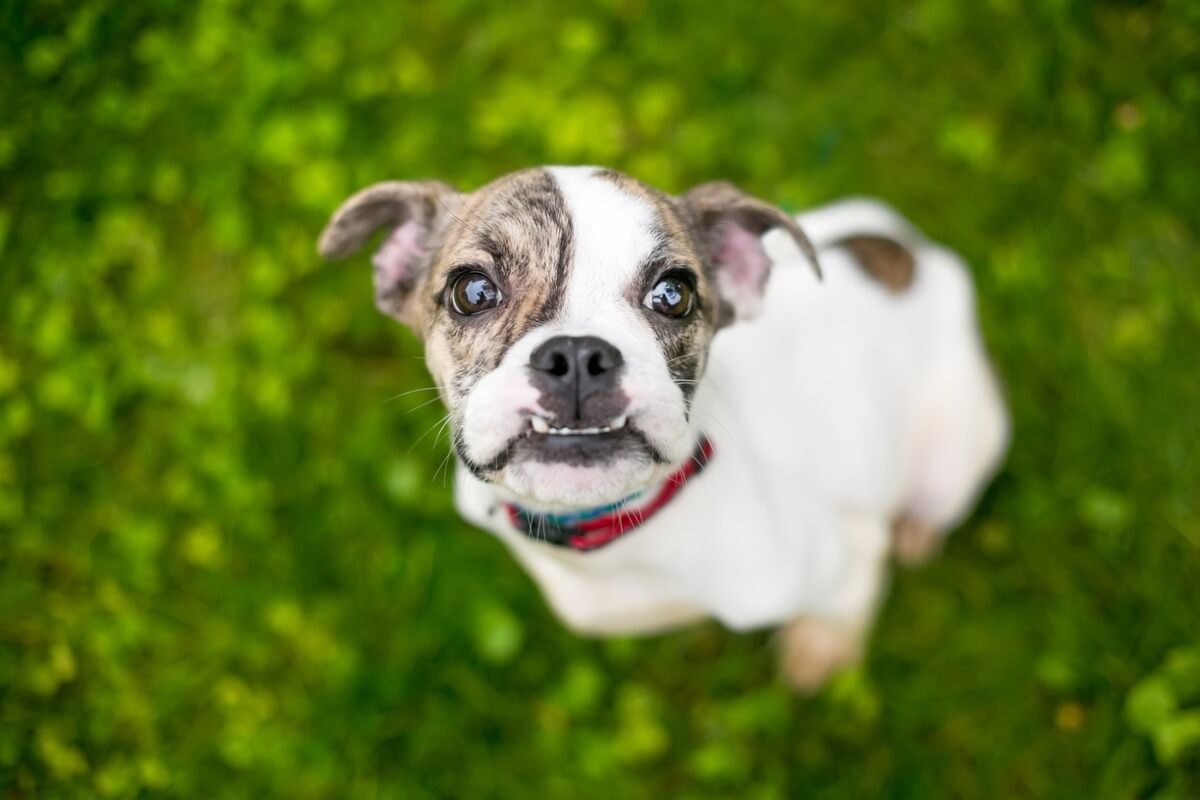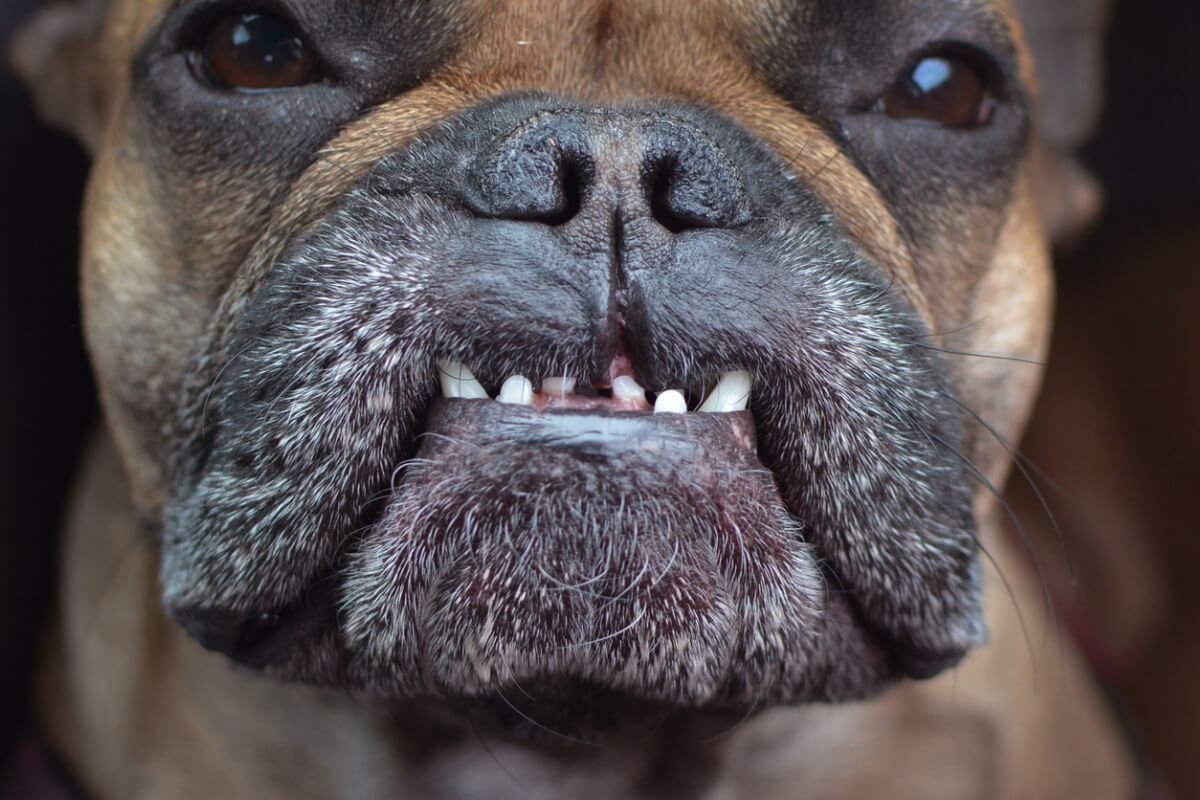Dental Malocclusion in Dogs: Causes, Consequences and Treatments

Dental malocclusion in dogs occurs when the canine’s teeth don’t line up correctly with each other. This aesthetic defect can cause problems ranging from mild injuries to really serious pathologies in the animal if it isn’t addressed.
Typically, malocclusion problems cannot be defined until the animal loses their milk or deciduous teeth. This moment usually occurs when they reach 6 months of age and already have their final teeth. In the following lines, you’ll find the most common causes of this problem, as well as its consequences and possible treatment.
Types of dental malocclusion in dogs
The main signs that a dog isn’t biting properly due to misalignment of the teeth are an overbite and a protruding lower jaw, a physical event known as prognathism.
By 10 months of age, a dog will already have a formed jaw and all the permanent teeth. In most cases, the teeth will be aligned with each other, as if they were scissors —or zigzags.
There are different types of malocclusion, some of them typical of certain dog breeds and others not. Overbite is the most common defect and it isn’t related to any hereditary factors. The dog that suffers from it has a muzzle in the shape of a parrot’s beak.
The bite can also be crossed and the jaw may not lock together correctly. On certain occasions, malocclusion problems can be solved by extracting certain teeth before the dog’s jaw isn’t fully developed.
After this moment, only treatment or surgeries can be applied that alleviate the condition, but these don’t solve the problem.

Causes of dental malocclusion in dogs
Many dog breeds have hereditary malocclusion problems, as is the case with brachycephalic dogs. Although, in principle, this isn’t a problem – as long as the necessary preventive actions are carried out, sometimes other dental pathologies can develop.
In dog breeds where malocclusion appears as a defect due to deciduous teeth, the resulting problems can be more serious. In general, the causes of malocclusion in dogs are either hereditary or acquired by an incorrect replacement of teeth during the change from milk teeth to permanent ones.
Consequences of a bad bite
When a dog doesn’t have a correct bite, there’ll be spaces between the teeth where bacteria can freely lodge. This bacterial overgrowth, coupled with the fact that other food remains lodged in the same place, can increase the growth of dental plaque.
Dental plaque is a mineral residue left behind by bacteria and accumulates on enamel, the outermost layer of the tooth. Dental plaque is the main cause for the development of dental diseases, such as gingivitis or periodontal disease in dogs.
This latter pathology is very painful, as it causes inflammation of the gums; the teeth will start to rot and eventually fall out. However, very often, the teeth don’t fall out because the plaque itself keeps them attached to the gum.
Another consequence of malocclusion is that the teeth dig into the soft tissue of the mouth. This causes constant wounds that are difficult to heal if the part causing the damage isn’t removed. Finally, many dogs develop eating problems and end up suffering from anorexia and malnutrition, as well as very unpleasant pain.
Although the integrity of all teeth can’t always be respected when solving a malocclusion, there are new techniques in veterinary medicine that could achieve this.
Treatment of malocclusion in dogs
For prognate breed dogs there’s no possible treatment. However, these dogs need special care and more frequent visits to the vet to keep track of dental health.
As a general rule, these dogs need more ultrasound cleaning, as well as routine surveillance. On the contrary, in dog breeds where malocclusion is a defect, it’s necessary to apply some form of treatment.
Sometimes the extraction of one or more teeth is enough to leave room for the rest of the teeth to grow. In other more severe cases, most of the teeth must be extracted in order to prevent periodontal disease.
In addition, it should be noted that, in recent years, corrective treatments such as orthodontics and the installation of oral appliances have begun to correct the position of the teeth.
This method is the most effective and least traumatic, as the animal will keep all its teeth in most cases and, in addition, will achieve a correct bite. However, these types of treatments are expensive and aren’t applied in all countries, although, over time, this is expected to change.

At the moment, if the pet develops a malocclusion problem, the most important thing to do is to maintain dental hygiene, practice daily brushing, and get a clean at the vet’s when they deem it necessary. If all oral parameters are kept in check, this condition doesn’t need to get any worse.
All cited sources were thoroughly reviewed by our team to ensure their quality, reliability, currency, and validity. The bibliography of this article was considered reliable and of academic or scientific accuracy.
- Amimoto, A., Iwamoto, S., Taura, Y., Nakama, S., & Yamanouchi, T. (1993). Effects of surgical orthodontic treatment for malalignment due to the prolonged retention of deciduous canines in young dogs. Journal of Veterinary Medical Science, 55(1), 73-79.
- Ramfjord, S. P., & Ash, M. M. (1981). Significance of occlusion in the etiology and treatment of early, moderate and advanced periodontitis.
- Shaw, W. C., Addy, M., & Ray, C. (1980). Dental and social effects of malocclusion and effectiveness of orthodontic treatment: a review. Community Dentistry and Oral Epidemiology, 8(1), 36-45.
- Southerden, P. (2017). Malocclusion in dogs and cats. The Veterinary Nurse, 8(4), 207-214.
